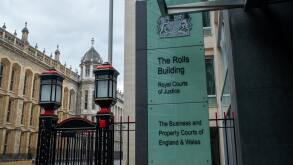
I'm attending the 48th ICANN meeting in Buenos Aires, Argentina and there's a slightly different feel compared to others I've been to.
As one lawyer I spoke to yesterday put it, in the past ICANN was an opportunity for people to have their say about domain name policy; sessions were well attended and making your view heard seemed to be paramount.
At this meeting, though, it feels like much of the action is taking place behind the scenes. There are meetings between gTLD applicants, between registries and registrars and between various providers of IP protection mechanisms. It's now about business, rather than just talking.
The reason why is clear: after years of delay and discussion, the new gTLDs are finally with us. The first four new strings were added last month, and Donuts – likely to be the biggest operator of new gTLDs, with maybe 200 properties – is launching a 60-day sunrise period for seven names next week, with more to follow in December.
According to ICANN, the number of new gTLDs in the root has already doubled, with 24 added, including four in non-Roman scripts. Among them are .camera, .sexy, .singles and .voyage. A total of 960 gTLD applicants have been invited to sign contracts, and 144 have already done so.

These were some of the figures published at an update on the new gTLD programme yesterday. But the most striking statistic for IP owners is that the number of trade marks registered in the Trademark Clearinghouse so far is just 16,704.
We'll learn more about the Clearinghouse later this week, and I hope to be able to report further details, but that seems like a pretty low number. There are millions of registered trade marks in the world that are eligible. You have to have your mark validated in the Clearinghouse to benefit from the sunrise periods in any of the new gTLDs, as well as to be able to use the trade mark claims service (and validation can take 21 days).
Why have more trade mark owners not made use of the Clearinghouse yet? People have many different answers to that question – spanning ignorance, cost, wariness and the limitations of the rules (particularly where similar domains are concerned). It may also be true that some trade mark owners have decided that other tools – such as the new URS – mean they do not need to make use of the Clearinghouse, or just that they are prepared to run the risk of their trade marks being squatted in some of the new TLDs.

But I expect that overriding all of these reasons is a continuing suspicion about the new gTLD programme. Clearly trade mark owners did not seek such a big expansion of the domain name system (though remember that many brand owners have applied to run gTLDs) and maybe some still want to believe that it's not really happening.
Well, it is. And it's going to come quickly. If you don't at least think about what you need to do to protect your brand now, you can't complain if you are faced with dozens cybersquatting cases over the next few years.










